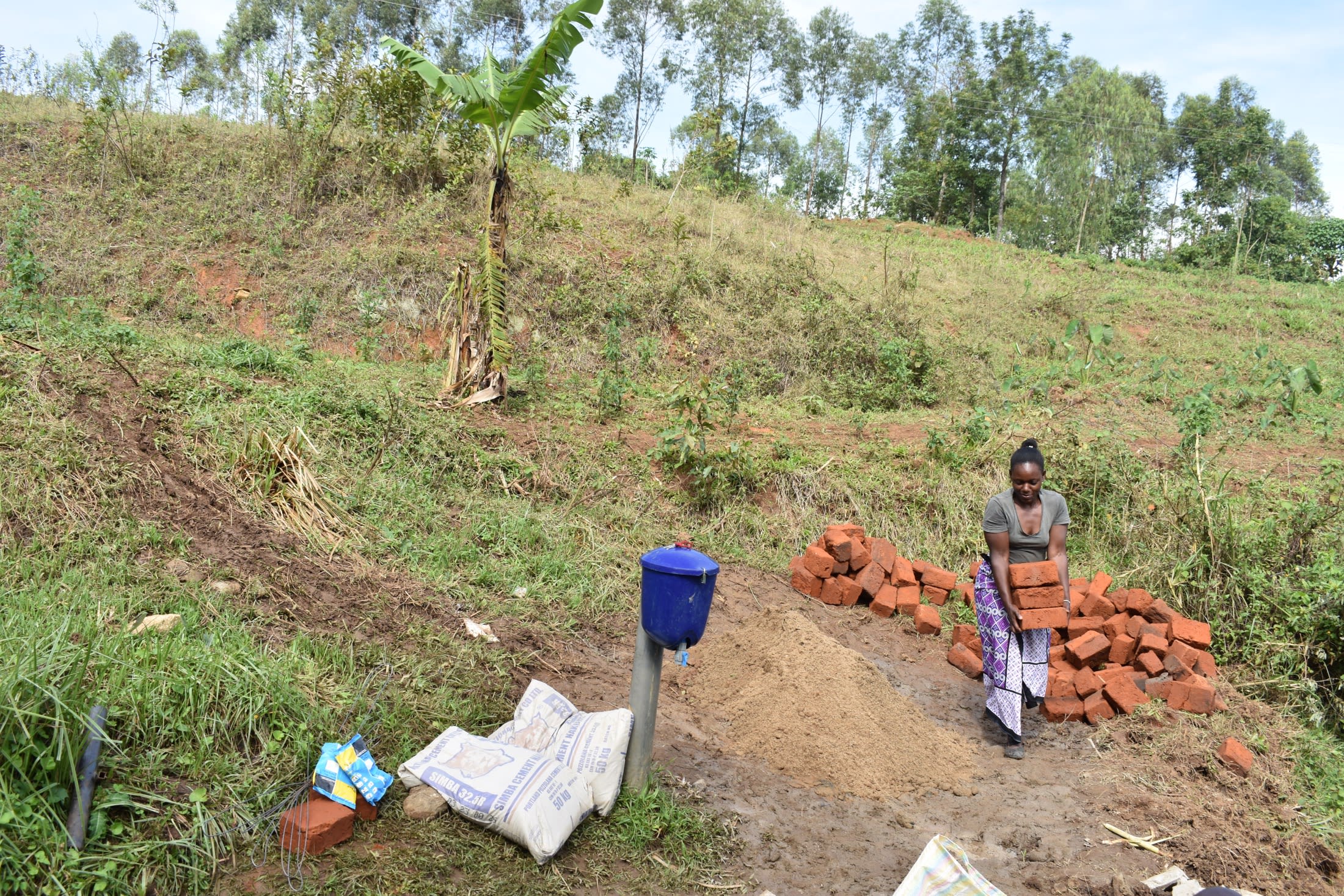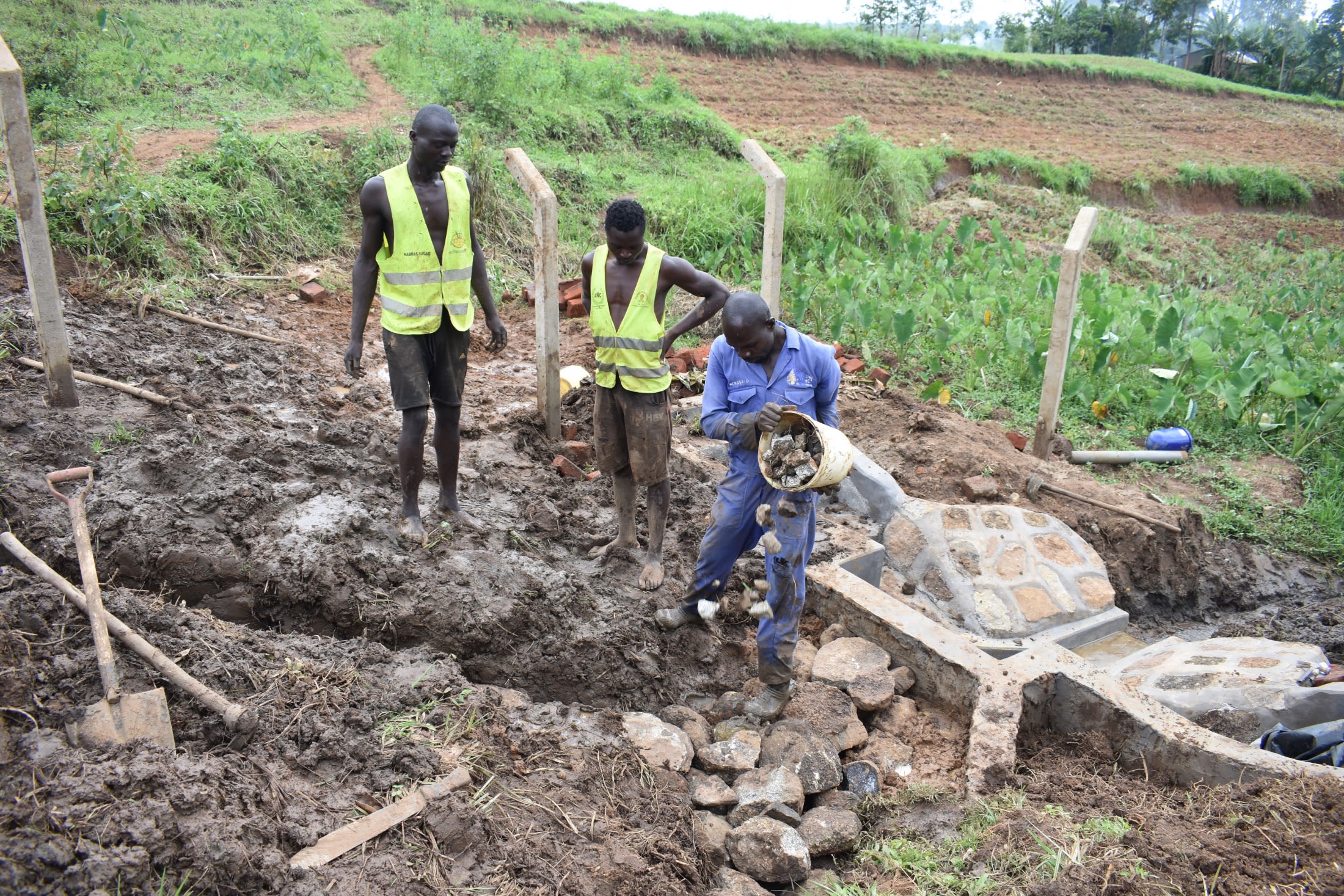When looking at Opuchi Spring, the primary water point relied upon by the 140 community members who live in Mwituwa, it is easy to see that collecting water here is challenging. In fact, if you didn't know its location or spot the chlorine dispenser or the small, muddy pool of water at its base, you would likely walk right past it.

It is tucked into a narrow crevice at the bottom of a slope that is covered in grass. For people to access it, they must walk through the puddle of water and precisely line up their collection container on a rock under an improvised spout, which produces just a trickle of water. The process is tedious and time-consuming.
"The daily schedule of community members involves going early to the spring to fetch water so that it can help in conducting daily cleaning and other activities. Due to congestion and sometimes [a] low quantity of water experienced at the water source, they end up wasting a lot of time, not even accomplishing their daily routines," said our field officer Joyce Naliaka.
The collection process is especially challenging during the dry season when the water quantity diminishes further. Community members end up making several trips a day in an attempt to collect enough water.
Not only is the spring difficult to access and water collection painstakingly slow, but the spring is open to all kinds of contamination, making the water unsafe for human consumption.
Most community members have reported contracting waterborne illnesses such as diarrhea and typhoid despite having a chlorine dispenser close to the spring. The dispenser has not been filled or utilized properly, and part of our solution in this community will need to be training on the proper use and maintenance of the dispenser.
"Our main water source is sometimes low-yielding and congested, with some members doing all their laundry around the source, forcing us to walk long distances after school searching for clean and safe water to help my parents accomplish their daily routines," said 15-year-old Alfred O., collecting water below.

"Personally, I feel so drained because most of my precious time and energy has been wasted in the process of searching for clean and safe water. Our main water source is sometimes low-yielding, causing congestion and forcing us to walk long distances to alternative sources, which interferes with our daily routines," said 48-year-old farmer Susan Andayi, shown below at the spring.

"If a permanent solution is realized, then we shall have a drastic improvement in time management and hygiene," concluded Susan.
"If we could get a permanent solution to this water problem, then I feel we can develop ourselves economically, health-wise, and education-wise," said Alfred.
By protecting this spring, community members will be able to more efficiently and easily collect safer water. And by having time to attend to their other important tasks, hopefully, they will be able to make improvements in all areas of life.
What We Can Do:
Spring Protection
Protecting the spring will help provide access to cleaner and safer water and reduce the time people have to spend to fetch it. Construction will keep surface runoff and other contaminants out of the water. With the community’s high involvement in the process, there should be a good sense of responsibility and ownership for the new clean water source.
Fetching water is a task predominantly carried out by women and young girls. Protecting the spring and offering training and support will, therefore, help empower the female members of the community by freeing up more of their time and energy to engage and invest in income-generating activities and their education.
Training on Health, Hygiene, COVID-19, and More
To hold training, we work closely with both community leaders and the local government. We ask community leaders to invite a select yet representative group of people to attend training who will then act as ambassadors to the rest of the community to share what they learn.
The training will focus on improved hygiene, health, and sanitation habits in this community. We will also have a dedicated session on COVID-19 symptoms, transmission routes, and prevention best practices.
With the community’s input, we will identify key leverage points where they can alter their practices at the personal, household, and community levels to affect change. This training will help to ensure participants have the knowledge they need about healthy practices and their importance to make the most of their water point as soon as water is flowing.
Our team of facilitators will use a variety of methods to train community members. Some of these methods include participatory hygiene and sanitation transformation, asset-based community development, group discussions, handouts, and demonstrations at the spring.
One of the most important issues we plan to cover is the handling, storage, and treatment of water. Having a clean water source will be extremely helpful, but it is useless if water gets contaminated by the time it is consumed. We and the community strongly believe that all of these components will work together to improve living standards here, which will help to unlock the potential for these community members to live better, healthier lives.
We will then conduct a small series of follow-up trainings before transitioning to our regularly scheduled support visits throughout the year.
Training will result in the formation of a water user committee, elected by their peers, that will oversee the operations and maintenance of the spring. The committee will enforce proper behavior around the spring and delegate tasks that will help preserve the site, such as building a fence and digging proper drainage channels. The fence will keep out destructive animals and unwanted waste, and the drainage will keep the area’s mosquito population at a minimum.





 Protected Spring
Protected Spring
 Rehabilitation Project
Rehabilitation Project





























